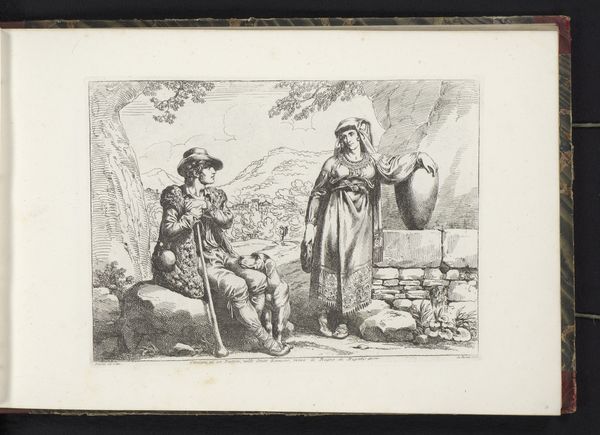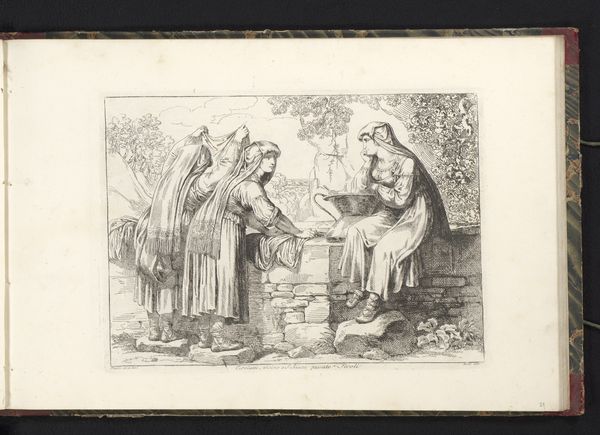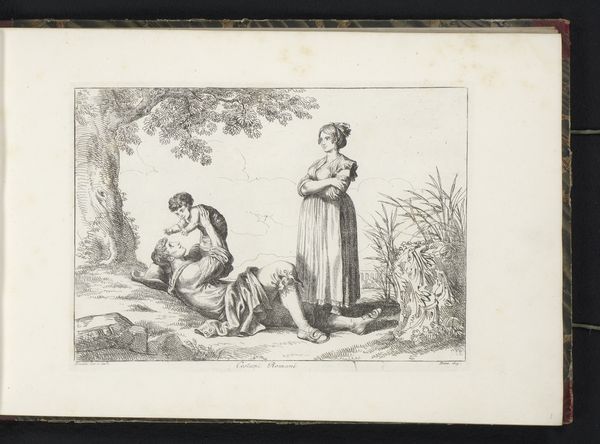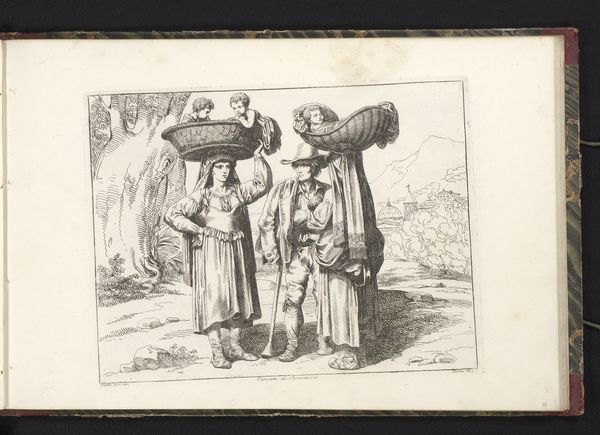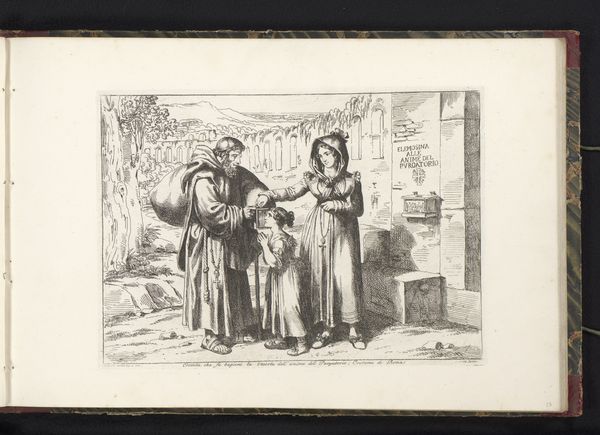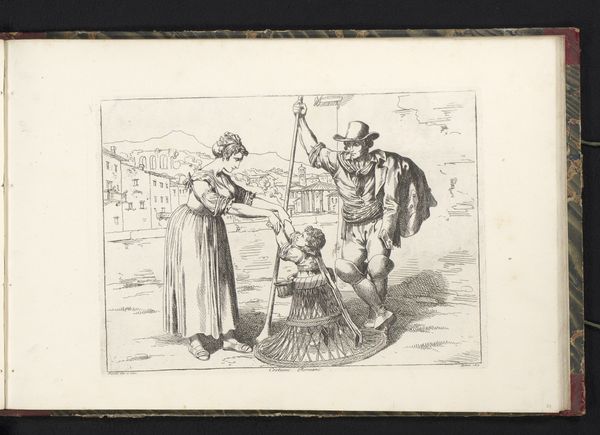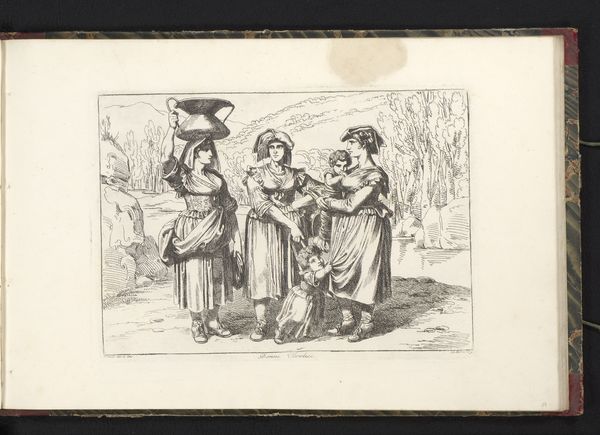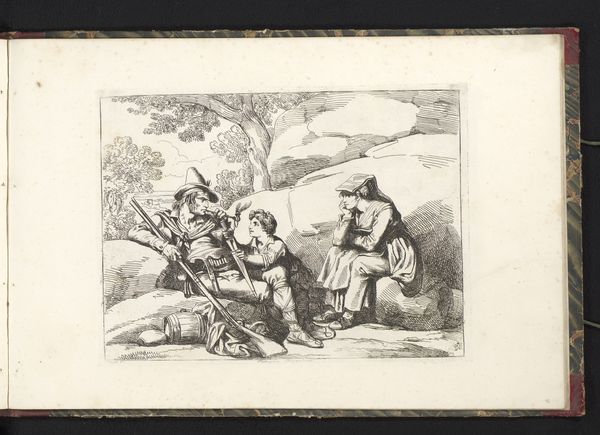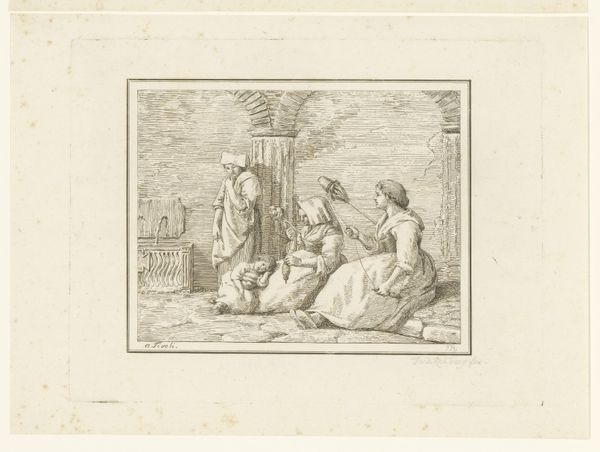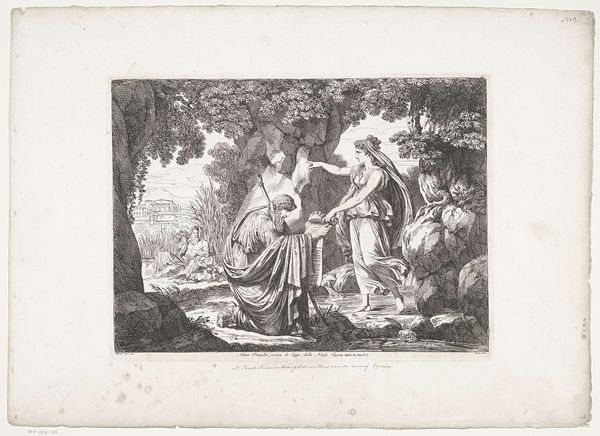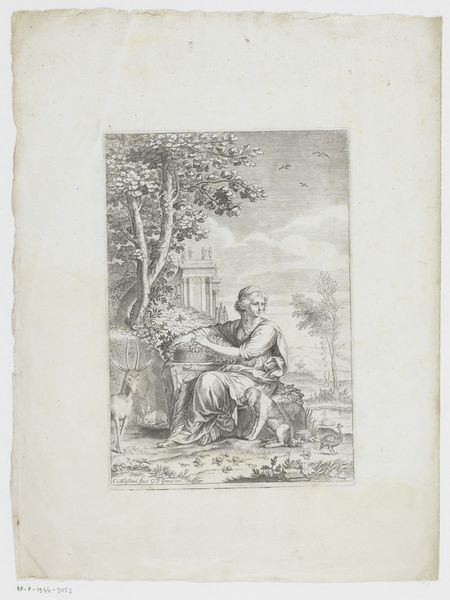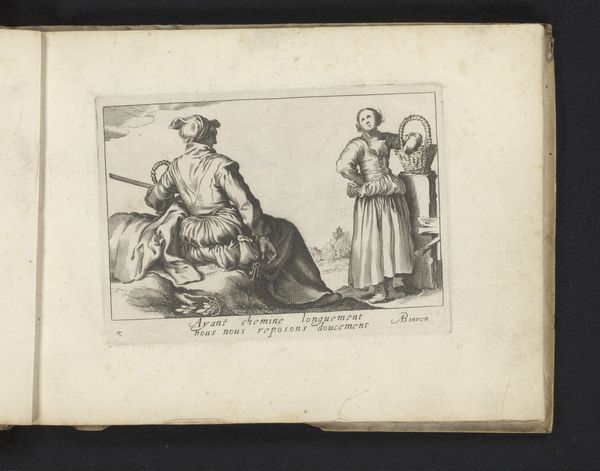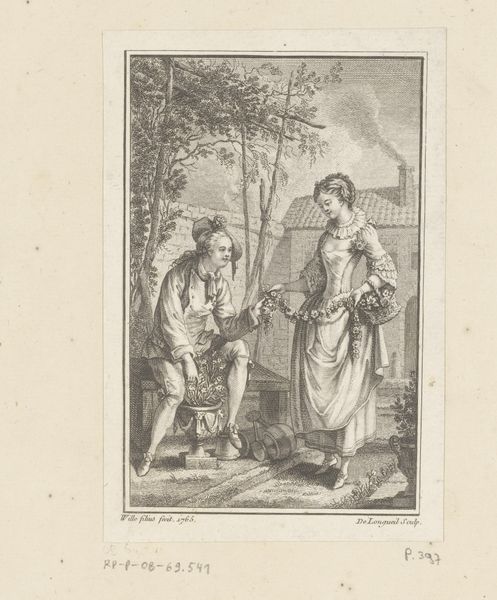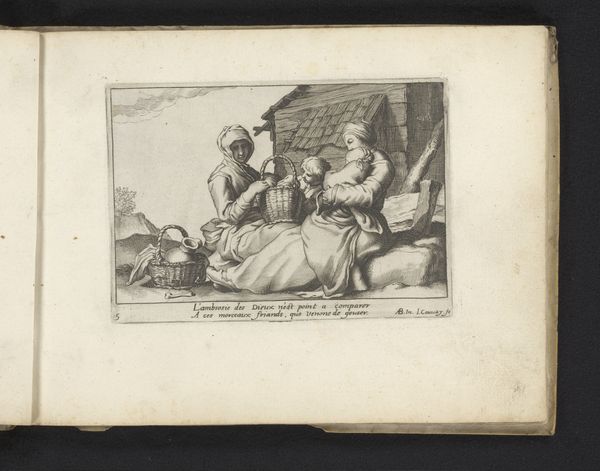
drawing, print, engraving
#
portrait
#
drawing
#
narrative-art
# print
#
landscape
#
figuration
#
coloured pencil
#
genre-painting
#
history-painting
#
italian-renaissance
#
engraving
Dimensions: height 204 mm, width 280 mm
Copyright: Rijks Museum: Open Domain
Editor: This is "Jongeman met twee vrouwen en een kind uit Filettino," or "Young man with two women and a child from Filettino," by Bartolomeo Pinelli, created in 1819. It appears to be an engraving. I’m immediately struck by the subjects' clothing. What’s your take on it? Curator: It’s essential to consider the historical context. Pinelli often depicted scenes of Roman daily life. This image, like others from his hand, seems to romanticize peasant life. The clothing is clearly traditional dress, but it's also staged, hinting at the ways rural populations and their traditions were being othered, exoticized, and even consumed by a rapidly modernizing urban elite. Do you see how this presentation may affect how viewers interpret the subjects' identities and social standing? Editor: So, it's not necessarily an accurate representation of their reality, but more of a constructed image? It does seem like the figures are carefully arranged. Curator: Exactly. Think about power dynamics. Who is controlling the narrative? Pinelli, as the artist, is mediating our view of these people from Filettino. It encourages us to ask critical questions: What stereotypes might be at play here? And how does art like this contribute to broader social and political discourses of the time regarding class and regional identities? The picturesque scenery versus the realities they may have been experiencing. Editor: That makes me think about how easily we accept visual representations without questioning their origins and potential biases. It makes me consider the role of the artist in shaping our perceptions of marginalized communities. Curator: Precisely. And considering Pinelli’s popularity, we see how powerful these images were in shaping narratives about rural Italians, impacting how they were perceived, understood, and treated in broader social contexts. It highlights the role art can play, not just in reflecting society, but actively shaping it. Editor: That's definitely given me a lot to think about regarding the ethics of representation in art. Thanks!
Comments
No comments
Be the first to comment and join the conversation on the ultimate creative platform.
